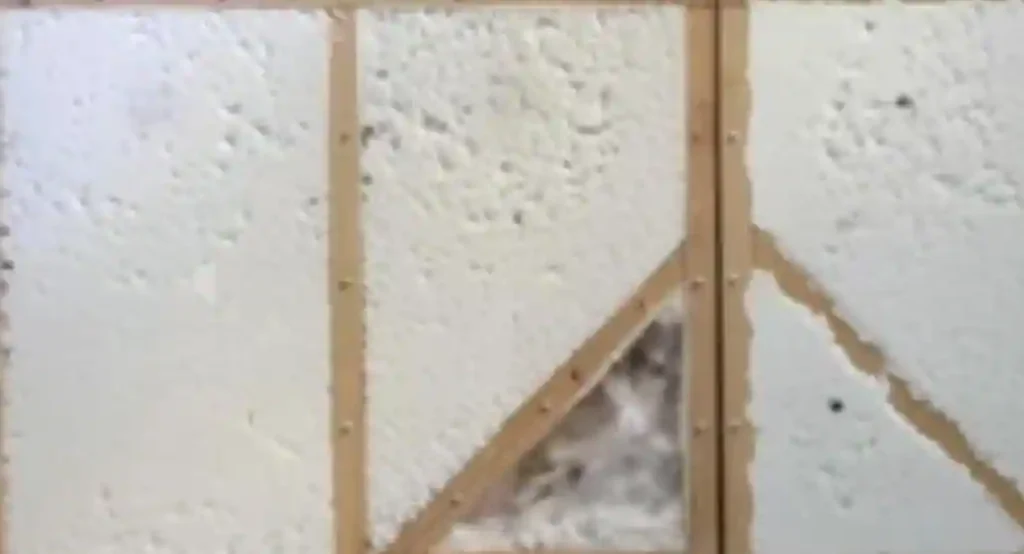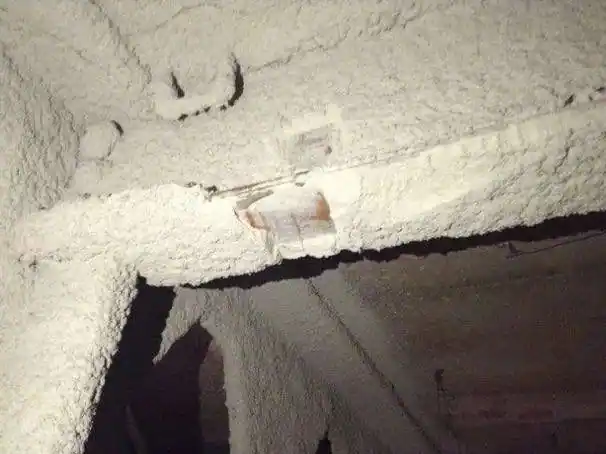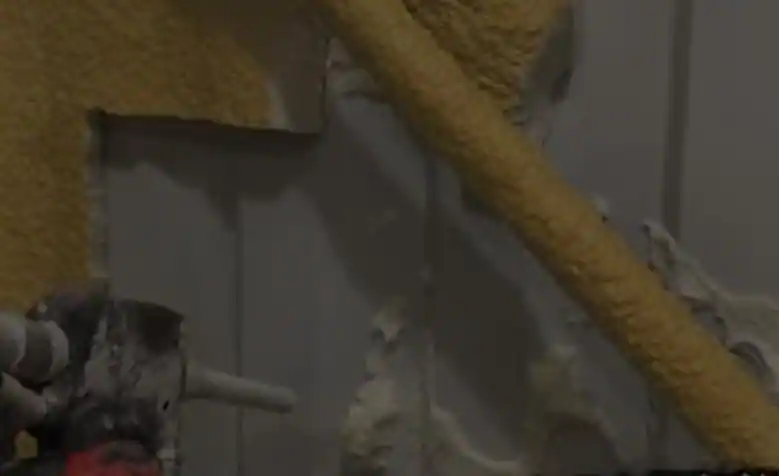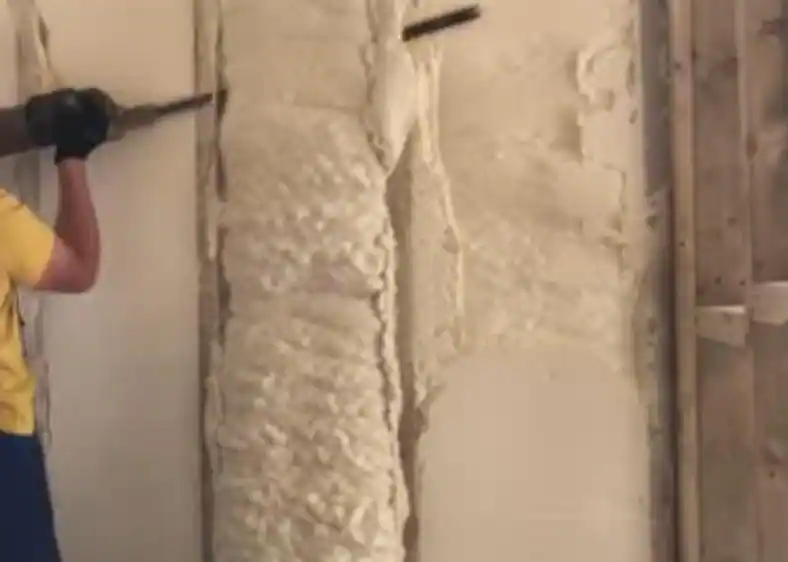spray foam insulation removal cost/ how to remove foam insulation/ how to remove closed cell foam insulation
spray foam insulation removal cost – A Complete Guide to Safely and Effectively Removing Foam Insulation
First of all, For homeowners wishing to lower their heating and cooling expenses and increase energy efficiency, foam insulation is a popular option. However, whether it’s because of damage, renovations, or something else entirely, there can come a moment when you need to remove foam insulation. To ensure safety along with correct efficacy, there is one best insulation, foam insulation removal involves meticulous planning and execution.
So, here we’ll go over the different kinds of foam insulation, why it needs to be removed, safety tips, as well as detailed directions for doing it safely in this article. Different types of foam insulation are available, such as rigid foam boards, foam panels, and spray foam. Every variety has special qualities and uses of its own. In our previous post, we shared information about Asbestos Insulation In attic And How To Remove Asbestos, so you must read this post because removing spray foam insulation is not easy, you need to take care and follow the safety rules,
Spray Foam Insulation:
This adaptable material is frequently used to insulate crawl spaces, attics, and walls. When applied, it expands to fill up voids and cracks and offers superior thermal insulation.
Rigid Foam Boards:

Also referred to as foam panels, rigid foam boards are lightweight, manageable, and have a high insulation value. They are frequently employed to offer ongoing insulation and heat resistance in walls, roofs, and floors.
Reasons behind Removing Foam Insulation:

You may need to remove foam insulation for several reasons:
Damage:
Physical impact, pest infestation, and water intrusion can all cause damage to foam insulation. Insulation that is damaged may become ineffective and need to be replaced.
Renovation:
In order to make room for new insulation materials or to get access to underlying structures, foam insulation may need to be removed during home remodeling or renovation projects.
Health Concerns:
When exposed to specific kinds of foam insulation, some people may have allergic reactions or respiratory problems. Eliminating the insulation can assist reduce health issues and enhance indoor air quality.
Safety Observations:
It’s crucial to think about safety measures before starting the removal process in order to shield others and yourself from any potential risks:
Wear Personal Protective Equipment:
Wear the proper personal protection equipment (PPE) to avoid skin contact and foam particle inhalation. Examples of PPE include gloves, safety goggles, respirator masks, and protective clothes.
Ventilation:
To reduce exposure to airborne pollutants and odors, make sure the workspace has enough ventilation. Electrical Safety:
Before beginning any removal work, turn off all power sources to prevent unintentional contact with any electrical fixtures or cables.
Environmental Protection:
To avoid contaminating the environment, dispose of removed foam insulation properly and in accordance with local laws.
How To Remove Foam Insulation

Foam insulation may eventually need to be removed for a variety of reasons, including renovations, damage, and other issues. Careful planning and execution are necessary when removing foam insulation in order to maintain public safety and limit harm to neighboring surroundings. We’ll lead you through the process of securely eliminating foam insulation from your house in this guide.
Evaluate the circumstances
Examine the foam insulation’s condition and the region around it before starting the removal process. Find out what kind of foam insulation was used, as this will influence how it is removed. Spray foam, rigid foam boards, and foam-in-place insulation are examples of common forms of foam insulation. Step 2: Assemble the Required Instruments and Gear
Collect the instruments and supplies
Protective gear:
To shield yourself from dust and insulation particles, put on protective gloves, safety goggles, a dust mask, and appropriate clothing.
Utility knife:
Carefully cut the foam insulation away from the surface with a sharp utility knife. Pry bar or scraper: To carefully lift and remove foam insulation that has held on to surfaces, use a pry bar or scraper. Heat gun:
A heat gun can assist soften resistant or strongly adherent foam insulation to surfaces so that it can be removed more easily.
Vacuum cleaner:
As you work, use a vacuum with a HEPA filter to remove debris and dust from the insulation. Cover the surrounding surfaces with plastic sheeting to protect them from contamination and harm.
Cut the foam insulation and remove it.
First, use a utility knife to carefully cut away the foam insulation. To remove the insulation off the surface, cut straight along its edges. Be cautious not to harm the wood structure or plasterboard that is beneath.
After the foam insulation has been sliced away, carefully lift and remove it from the surface using a pry bar or scraper. Take your time and be thorough to prevent damaging the surrounding region.
If the foam insulation is firmly attached to surfaces, soften it using a heat gun before trying to remove it. To uniformly disperse the heat, hold the heat gun a few inches away from the insulation and move it back and forth.
After the foam insulation softens, lift and remove it with a pry bar or scraper to lift and remove.
Tidy Up the Space- how to remove closed cell foam insulation
Use a Hoover with a HEPA filter to remove any remaining dust and insulation particles after removing the foam insulation. Particular attention should be given to cracks, nooks, and other difficult-to-reach places.
By local laws, dispose of the foam insulation and any contaminated materials. For disposal options, check with your local recycling center as some types of foam insulation may be recyclable.
Examine Any Damage
Look for any indications of damage, such as moisture incursion, mold growth, or structural problems, in the region where the foam insulation was removed. Resolve any damage right away to avoid more issues. At last, we can say, in order to ensure safety and minimize harm to the surrounding regions, removing foam insulation from your home requires careful preparation and execution.
With the correct tools and equipment, you can safely remove foam insulation and get the space ready for remodeling or re-insulation by following the methods given in this article. If you have any questions or run into any problems when removing the insulation, you should think about getting help from a qualified insulation contractor.
Now in the next passage, we will see, how to remove closed cell foam insulation
How To Remove Closed Cell Foam Insulation

Because of its superior thermal characteristics and resistance to moisture, closed-cell foam insulation is a preferred option for insulating homes and other structures. But eventually, whether it’s for renovations, damage, or some other cause, removal can be required. Even though taking out closed-cell foam insulation can be difficult, it can be done safely and successfully with the correct equipment and methods. We’ll take you step-by-step through the removal of closed-cell foam insulation in this guide.
To remove closed spray foam, you should follow the first 4 steps of removing spray foam insulation, which we shared in the above passage. Then you can go with the following passage.
Step- Cut and Remove the Insulation
Cut through the closed-cell foam insulation gently with a utility knife or foam saw. Starting from a corner or edge, cut the insulation into manageable chunks by moving across the surface. Take care not to harm structural components or beneath surfaces. After the insulation has been divided into portions, carefully remove it off the substrate with an insulation removal tool or pry bar. Be cautious not to use excessive force as this could harm the surrounding environment.
Step- Clean up Debris- how to remove closed cell foam insulation
The work area may get dirty and noisy as you remove the insulation. To maintain a clean workspace and to remove any loose particles, use a Hoover cleaner equipped with a HEPA filter. Throw away the debris and removed insulation in the appropriate disposal bags.
Step 6: Inspect and Improve
Examine the underlying surfaces closely for any degradation or damage once the insulation has been removed. Before moving on to the next rehabilitation project or reinstallation, make any necessary repairs to the damaged areas.
Step- Get Rid of Any Insulation
Closed-cell foam insulation that has been installed correctly may contain chemicals or additives that call for certain disposal techniques. Verify your area’s rules and laws on appropriate disposal techniques. Insulation disposal must be done responsibly to reduce environmental damage and guarantee legal compliance.
Closed-cell foam insulation removal calls for thorough preparation, the appropriate equipment, and safety measures. You may safely and effectively remove insulation from your home or building by following the above step-by-step guide. It is important to remember to evaluate the issue, collect the required instruments and safety gear, set up the workspace, cut and remove the insulation, clear away any debris, check and fix surfaces, and dispose of insulation appropriately. If you feel uneasy or uncertain about the removal procedure, you might want to seek advice from an experienced insulation contractor.
Spray Foam Insulation Removal Cost
The cost of removing spray foam insulation varies according to numerous factors, including the size of the area to be treated, the type of spray foam insulation used, the region’s accessibility, and the intricacy of the removal process.
Here’s an overview of the variables that can influence the cost:
The size of the area covered with spray foam insulation determines the cost of removal. Contractors may charge by square footage, so larger areas will inevitably cost more to remove.
According to spray foam insulation types:
There are two types of spray foam insulation: open-cell foam and closed-cell foam. Closed-cell foam is denser and more difficult to remove, resulting in higher removal expenses compared to open-cell foam.
Accessibility:- spray foam insulation removal cost
If the insulation is located in difficult-to-reach regions like attics, crawl spaces, or tight corners, the removal process may be more complicated and time-consuming, resulting in greater expenditures.
Insulation Condition:- spray foam insulation removal cost
If the spray foam insulation is damaged or degrading, special treatment may be required during removal, which might raise the cost. Furthermore, if pollutants or mould are present in the insulation, additional measures may be required, increasing the cost.
Labor charges:
Labor charges will also go into the overall cost of spray foam insulation removal. This covers the time and effort spent on the removal process, as well as any specialised equipment or tools required.
Disposal Fees:
Proper disposal of removed spray foam insulation may result in additional expenditures, particularly if it must be disposed of as hazardous waste.
Contractor fees:- spray foam insulation removal cost
Contractors’ fees vary depending on their experience, region, and demand for their services. It is critical to receive quotes from several contractors to verify you are getting a reasonable price.
Average estimate cost- spray foam insulation removal cost
The average price of spray foam insulation removal was between $1.50 to $3.00 per square foot. However, this cost can vary greatly depending on the parts listed above and the specific conditions of the removal work.
For example, removing spray foam insulation from a 1,000-square-foot space could cost between $1,500 to $3,000. However, larger or more sophisticated projects may result in higher expenses.
It’s worth noting that the cost of removal may not include other charges like disposal fees, cleanup, or surface repairs. To avoid unforeseen charges, discuss these specifics with your chosen contractor. So, we can select according to your budget of spray foam insulation removal cost
Because of the specialized equipment and experience necessary, it is recommended to leave spray foam insulation removal to professionals. Understanding the elements that influence removal expenses and getting quotations from trustworthy professionals allows homeowners to make informed decisions and ensure a smooth and effective removal process. To achieve the best outcomes, prioritize safety, quality, as well as regulatory compliance when performing insulation removal tasks.
Bottom Line of The Post, Spray Foam Insulation Removal Cost And How To Remove Foam Insulation
It takes careful planning, the necessary equipment and procedures, and safety precautions to remove foam insulation. Whether it’s for renovation, maintenance, or health reasons, you may securely and successfully remove foam insulation from your home by following this complete advice. Always put safety first, and seek professional advice if you run into any problems or have any questions while removing something. You may successfully remove foam insulation from your home and increase its efficiency, safety, and comfort level with the right technique. Here we shared all the information about, how to remove foam insulation as well as spray foam insulation removal cost.
Do let us know how you feel about this information by commenting.
Like our Facebook page and follow for other updates like this.
